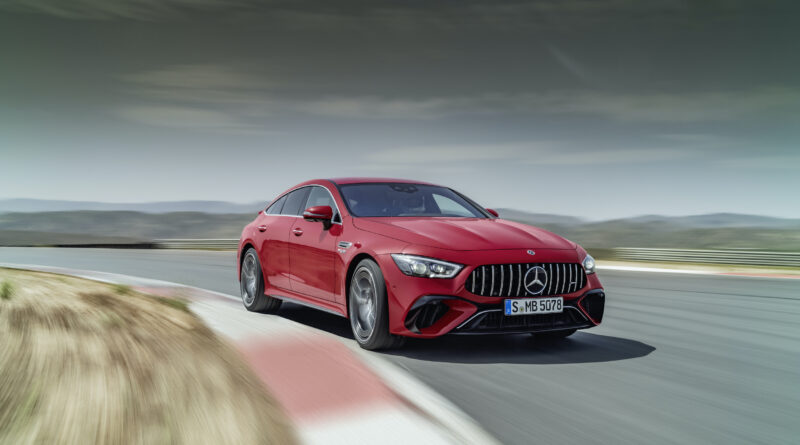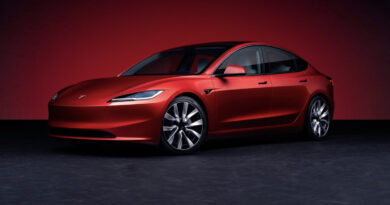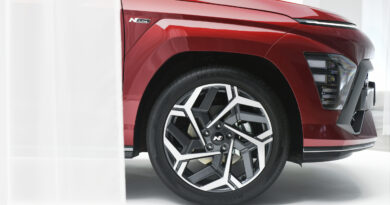Driven: Mercedes-AMG GT 63 S E Performance
Performance PHEVs are fast becoming a trend. The new GT 63 S E Performance is the most powerful road car AMG has ever produced… and it has a charging port flap in its rear bumper.
Under the bonnet is the same twin-turbo 4.0-litre V8 found in the biggest, fastest, loudest and baddest models to wear the Mercedes-AMG badge. What lifts this big liftback coupe’s performance beyond anything the company has created before is the electric motor in its rear axle.
The combined maximum output of AMG’s hybrid system is 620kW. Though large and heavy, Mercedes-AMG claims the all-wheel-drive GT 63 S E Performance can rip from rest to 100km/h in just 2.9 seconds. This is less time than it takes to say its clunkily long-winded name… and supercar fast.
Ferrari, for example, says its new 296 GTB sports car also takes 2.9 seconds for the 0-100km/h journey. And it just happens that it, too, is a performance PHEV.
In fact Ferrari, along with Porsche, has been something of a pioneer in this exotic niche. The Italian brand’s SF90 Stradale of 2020 was among the first cars to use electrification to achieve a big increase in performance instead of a huge reduction in fuel consumption.
The arrival of the GT 63 S E Performance signals that the performance PHEV trend will gather strength. Mercedes-AMG tech chief Jochen Hermann hints that the hybrid tech the car introduces will spread in time to other S-badged models in the company catalogue.
The system is modular and flexible, he says. These are engineer codewords meaning it’s been engineered for a variety of applications. Or, as you or I would put it, a bunch of different cars.
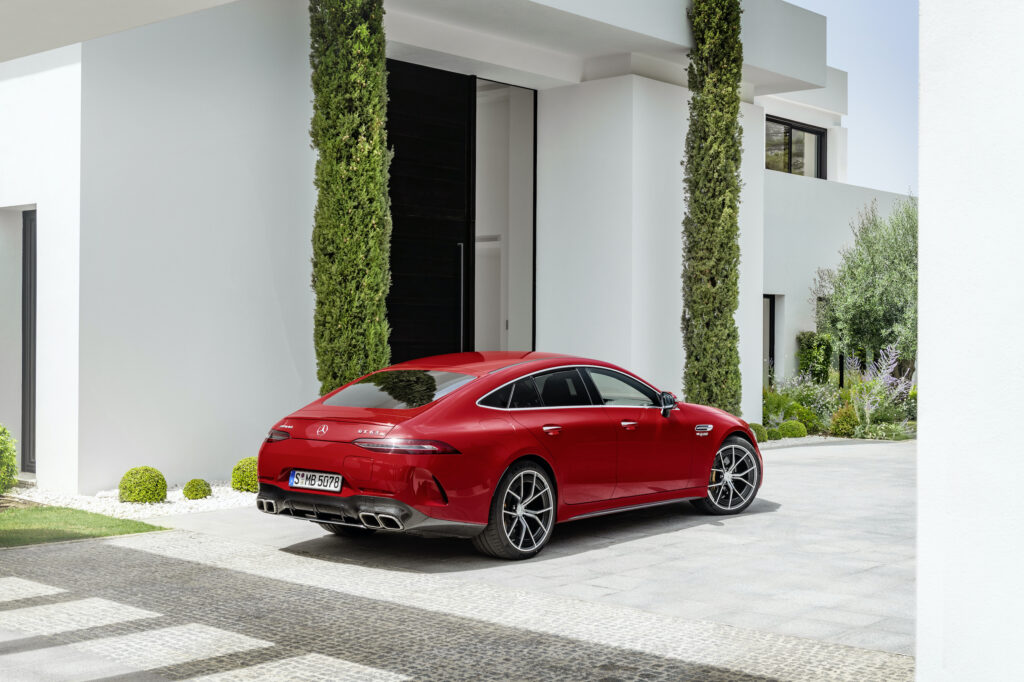
F1-inspired battery tech
While the battery pack of the GT 63 S Performance doesn’t share a single component with the pack in the Mercedes-AMG Petronas F1 car, it’s designed to work in a similar way.
The 400-volt pack is small, with a usable capacity of only 4.8kWh. But the chemistry of the battery cells is formulated for very high power density. They’re able to speedily put out and soak up electricity. So the pack can supply big power to the motor, and absorb very large doses of charge from regenerative braking.
It can do in just seconds what the battery pack of a normal PHEV will take minutes or hours to do, tech chief Hermann explains. The power density is around double that of a normal PHEV
To ensure the pack’s 560 cylindrical cells stay in their 30- to 40-degree feel-good zone they’re directly cooled by a non-conductive liquid similar to that used in large electrical transformers. The 14 litres of coolant are circulated around the cells inside the pack’s cast aluminium casing and an external heat-exchanger by an electric pump.
All-up weight of the pack is 89kg, including coolant. It’s installed near the rear axle, improving the AMG’s overall weight distribution but eating into its luggage space.
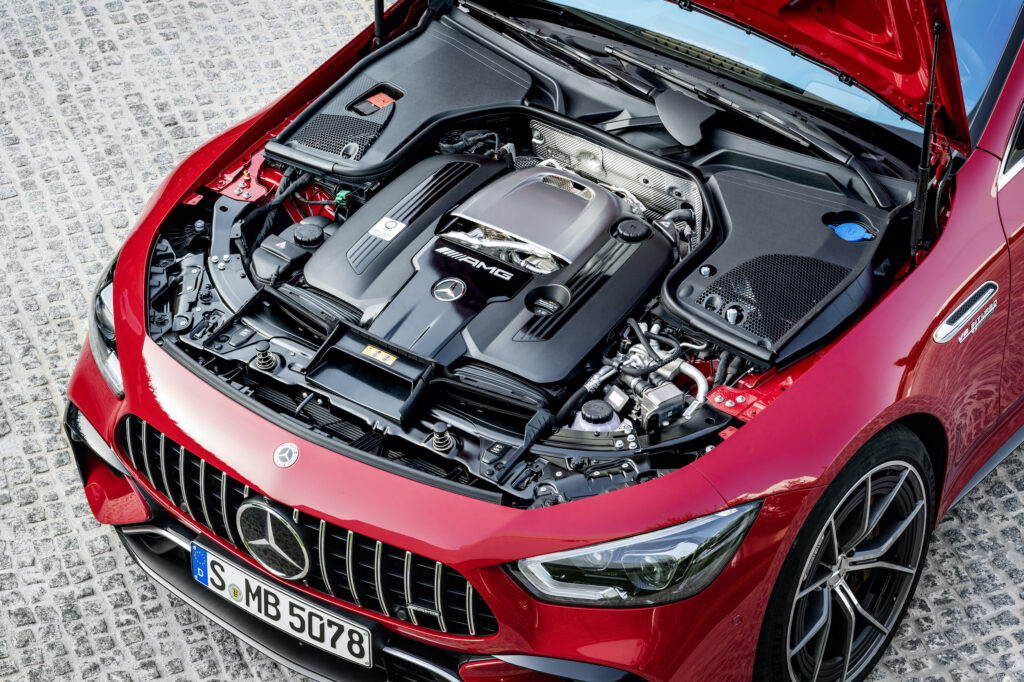
Electric motor and the rest…
There’s nothing unusual about the electric motor of the GT 63 S E Performance; it’s a synchronous permanent magnet machine. More interesting is how AMG’s engineers have arranged its installation.
A single casing contains the motor, its compact two-speed transmission, plus an electronically controlled limited-slip differential. This is very neat engineering, and it’s done for good reasons.
The connection between the electric motor and the car’s rear wheels is very short and direct. Motor responses are quicker and energy recuperation efficiency is better this way.
Installing the electric motor in the rear axle also makes more sense than slotting it between the engine and nine-speed transmission, as some others do. Including Ferrari. AMG’s layout avoids both adding extra torque stress for the GT 63 S E Performance’s nine-speed transmission and making the car more nose-heavy.
Bolted to the V8 engine is the final element of the hybrid system. It’s a 10kW BSG, standing for belt starter-generator. Like the label says, it functions as both starter motor and generator. When there’s not enough charge in the high-voltage battery, the BSG can supply juice to keep the car’s low-voltage electrical system working.

Driving fast, driving slow
The performance of the GT 63 S is neck-snapping, mind-bending, utterly outrageous and truly awesome. The electric motor does more than simply add a heaping helping of power; it adds sharpness to the way the car responds to the accelerator pedal.
But this performance PHEV is good for more than just straight-line thrills. Mercedes-AMG included laps of a track in Spain in its launch program. Around the Monteblanco circuit near Seville, the big GT 63 S E Performance was impressively capable.
Its massive 21-inch Michelin Pilot Sport 4 tyres naturally generate a lot of grip, but the AMG is also surprisingly well balanced. It’s too large and heavy to be called agile, but it’s confident and capable through the corners and the standard carbon ceramic brakes don’t wilt under pressure.
And the performance is amazingly consistent. The software developed by AMG for its new hybrid is designed to ensure that in Race driving mode the battery’s state of charge is always high enough to support repeated demands for maximum power.
During our laps of Monteblanco, the SOC actually increased significantly. Our test car had arrived at the track, having been driven from Seville mostly in Comfort mode, with only 20 percent charge in its battery. After half a dozen increasingly quick laps, it was close to 80 percent.
While the Sport and Sport+ driving modes deliver some extra electric motor boost, only Race can supply the absolute maximum. The motor’s two-speed transmission means that electric assist is available all the way from zero to the AMG’s 300km/h-plus top speed.
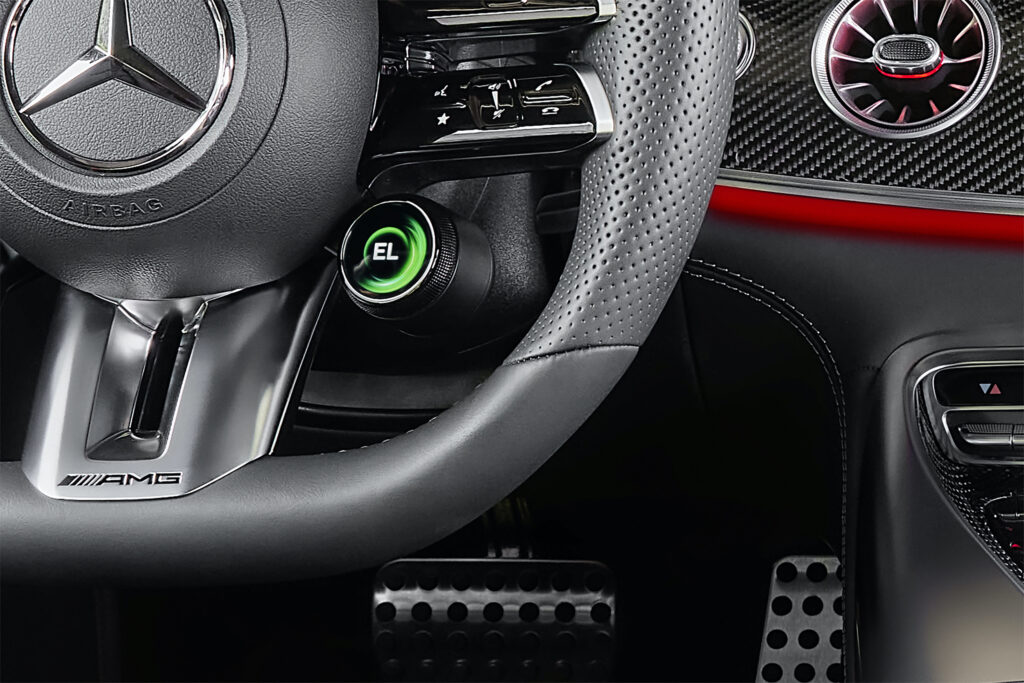
Using the car’s Electric mode in Seville’s morning traffic, the real-world range was much less than the 12km official WLTP figure. Around 8km is more like it.
In this mode the GT 63 S E Performance uses only ratio 1 in its two-speed electric motor transmission. Top speed is therefore limited to 130km/h by the electric motor’s 13,500rpm ceiling.
Once the battery’s SOC drops to around 25 percent, the PHEV will switch automatically to hybrid operation. The driver can also do this at any time by choosing Comfort.
In this mode the GT 63 S E Performance is calmer and quieter than the average AMG. The company’s drivetrain engineers estimate the hybrid system cuts overall consumption by around 10 percent. Judging by how often the car switched to pure electric drive in Comfort, it seems possible it could do better than this in real-world driving.
In Comfort, the electric motor’s transmission switches automatically between ratio 1 and ratio 2, depending on road speed and other parameters. It’s possible to feel the shifts, which occur in a range between around 90km/h and 130km/h, only if you’re paying close attention and the car is running electrically.
There’s scope to adjust the drivetrain’s behaviour to suit driver preference, too. A push on the centre of the driving mode selector dial accesses the ability to choose between four levels of regenerative braking, from none to strong.
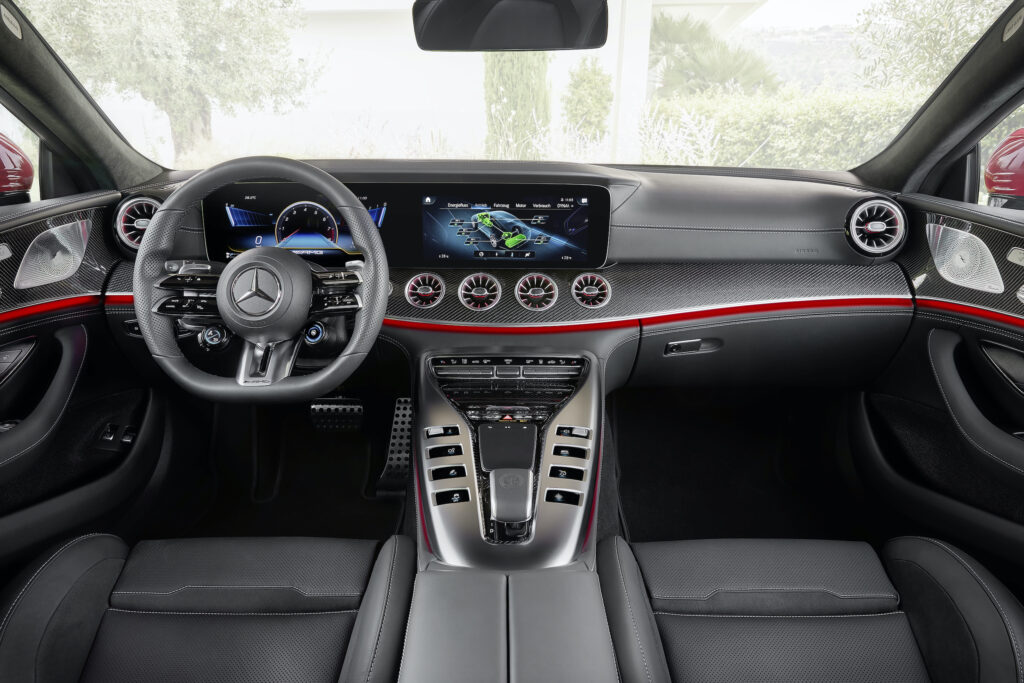
While the interior of the GT 63 S E Performance looks dated compared to newer models wearing the three-pointed star, like the EQE, EQS and S-Class, it’s lavishly equipped and beautifully made.
Ride quality in Comfort mode is good for something with the AMG’s performance potential. The suspension isn’t limo lush, but it’s nowhere near the brutal harshness of some models the company has produced in the past.

Rear-seat access and headroom aren’t strong points, but it’s the reduced cargo volume that’s a bigger problem. The hybrid battery pack cuts it to just 330 litres. With a larger luggage space the AMG would be a pretty fine car for grand touring.
Battery charging
The GT 63 S E Performance’s onboard AC charger is rated at only 3.7kW. It doesn’t need to be higher, given the battery pack’s measly capacity. And it would be even more pointless to add DC fast-charging capability, and AMG’s engineers aren’t paid good money to made bad choices.
The flap concealing the Type 2 charging port is in the car’s rear bumper. This isn’t the most elegant location. It looks very much like the design department lost an argument with engineering.
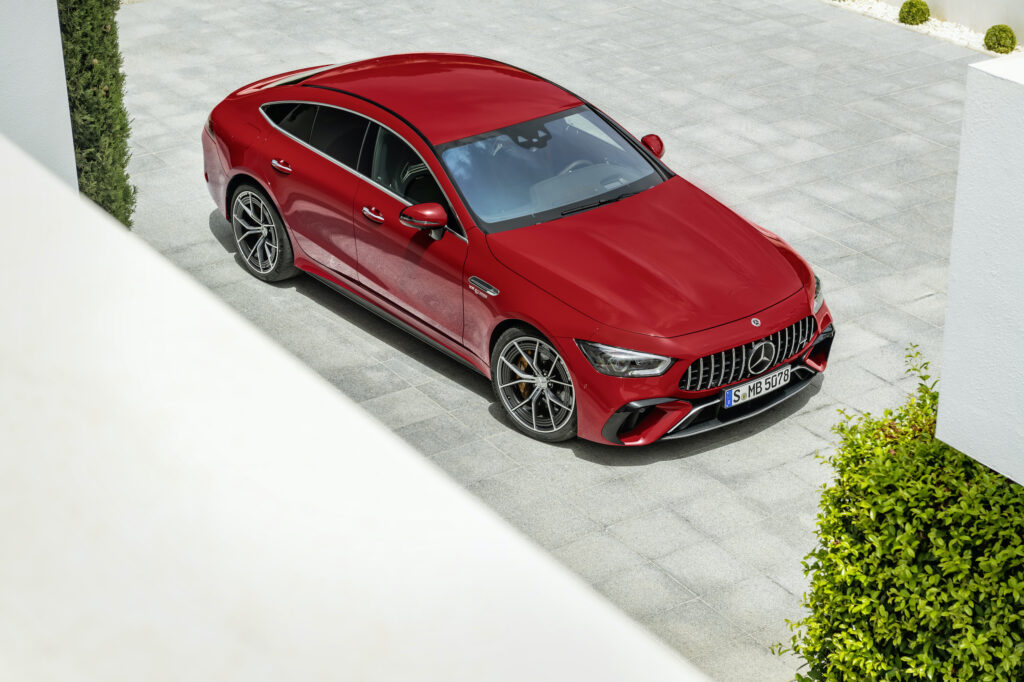
Pricing and timing
Production of the GT 63 S E Performance has already begun. AMG’s first performance PHEV should reach Australia late this year, wearing a price-tag of around $400,000. This is a small increase, at least in percentage terms, over the 63 S 4Matic that’s currently the only version of the GT 4-Door sold in Australia.
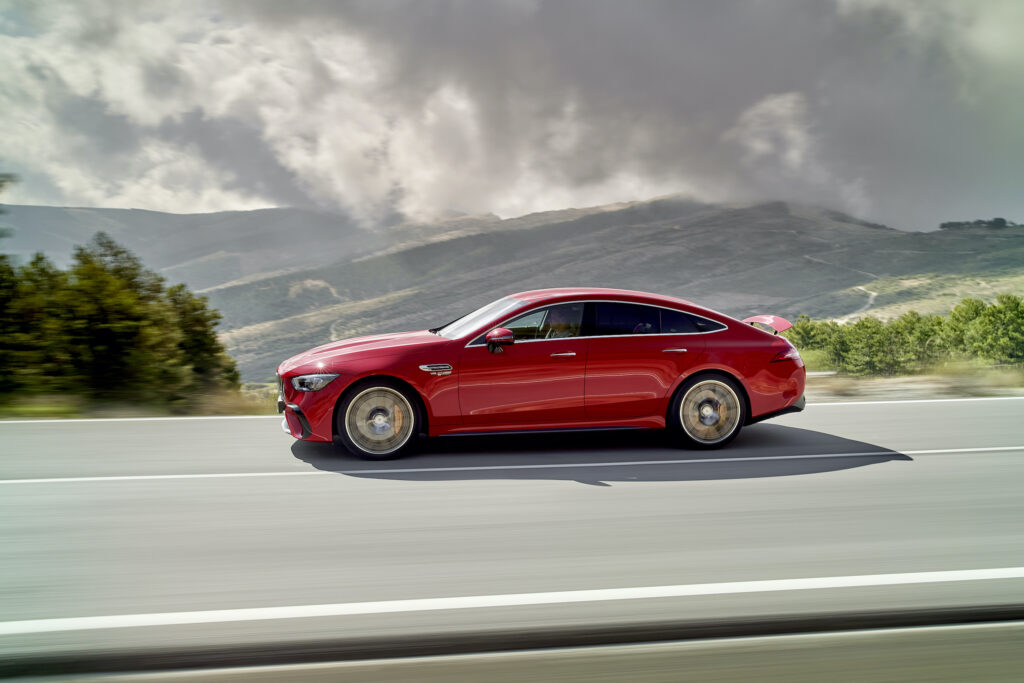
Trend or foe?
More thrills, not fewer fills is name of the GT 63 S E Performance’s game. And on those terms it’s a winner. It’s also thoughtfully engineered and fine fun to drive.
But, as any eco-conscious cynic or EV evangelist will point out, this performance PHEV delivers scanty environmental benefit for performance that’s no better than a top-end battery-powered performance car.
The excellent Porsche Taycan Turbo S, to name the first example that springs to mind.
Mercedes-AMG GT 63 S E Performance specifications
Price: $400,000 (est)
Basics: PHEV, 4 seats, 5 doors, liftback coupe, AWD
EV Range: 12km WLTP
Battery capacity: 4.8kWh
Battery warranty: Unknown
Energy consumption: 8.6L/100km
ICE: 4.0-litre twin-turbo V8, 470kW/900Nm
E-motor: 1 rear, 150kW/320Nm
AC charging: Type 2 plug, 3.7kW
DC charging: NA
0-100km/h: 2.9 seconds (claimed)

